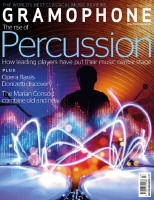Texte paru dans: / Appeared in: |
|
|
Outil de traduction (Très approximatif) |
|
|
Reviewer:
Iain Fenlon Francesca Caccini, daughter of the tempestuous professional singer Giulio, a composer best known for his landmark song collection Le nuove musiche published in 1602, was brought up in the hothouse atmosphere of the musical establishment of the Medici court in Florence. In these circumstances, it is not surprising that her only surviving opera, La liberazione di Ruggiero, based on an episode from Ludovico Ariosto’s widely disseminated epic poem Orlando furioso, is so markedly indebted to the Florentine style of recitar cantando, the new recitative style which her father so vigorously promoted. This central approach to vocal writing and delivery is enlivened in her score with arias, duets, trios and four-voice choruses to produce a dramatic vehicle endlessly varied in its ability to respond to shifting emotional states. The libretto, by Ferdinando Saracinelli, centres on the battle between two sorceresses, Alcina and Melissa, over the warrior Ruggiero, here given a convincing performance by Achim Schulz (a pleasantly light but still authoritative tenor). It would certainly have been familiar to the elite courtly audience gathered to hear the first performance, mounted to celebrate the visit of Archduke Karl of Styria to Florence during the Carnival season of 1625. Two arias stand at the emotional centre of the work. The first, performed by the Siren, is an exercise in the Renaissance tradition of Orphic song and is persuasively sung here by Katelijne Van Laethem in a dramatic account spiced with a rich vocabulary of embellishment overlaid on an accompaniment characterised by unexpected harmonic shifts. Particularly arresting in its depiction of a mind in despair is Michaela Riener’s delivery of Alcina’s lament at being abandoned by Ruggiero, a second set-piece aria, which is clearly composed in the tradition for such pieces established by Monteverdi’s legendary Lamento d’Arianna. Beyond that, some of Caccini’s most affecting and effective writing occurs in the self-contained chorus for Alcina’s discarded lovers, transformed into enchanted plants, who plead with Ruggiero not to leave. Both here and in many other places the instrumentalists play with style and sensitivity, and the necessary scoring (the printed rubrics do not solve all the problems) has been applied with skill and imagination (though not all will approve of the added percussive elements such as the triangle, particularly noticeable in the coro di damigelle). La liberazione should finish with a staged dance; but since the score does not include it, Paul Van Nevel has selected a galliard by Salamone Rossi to bring the piece to a close. |
|




